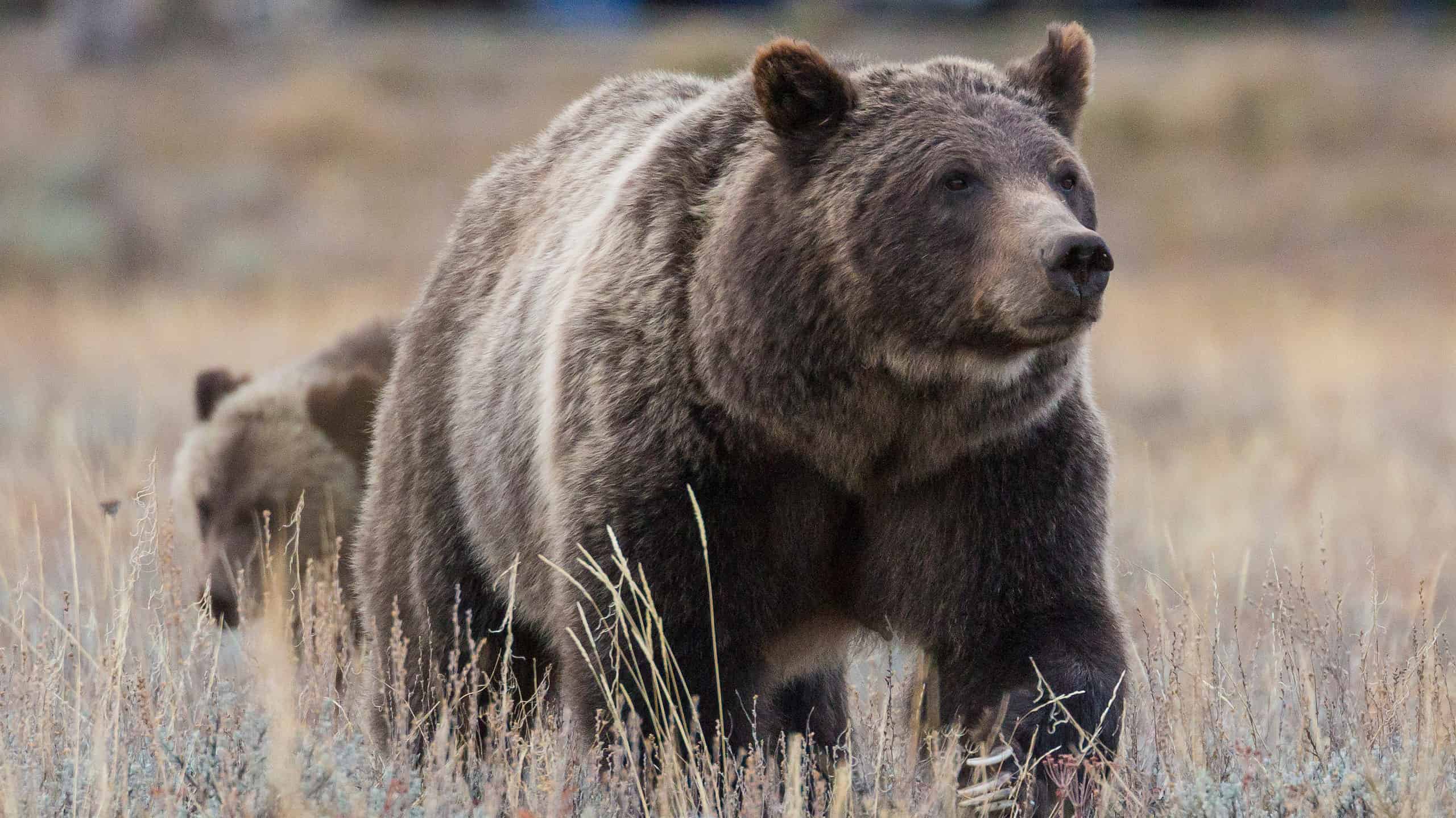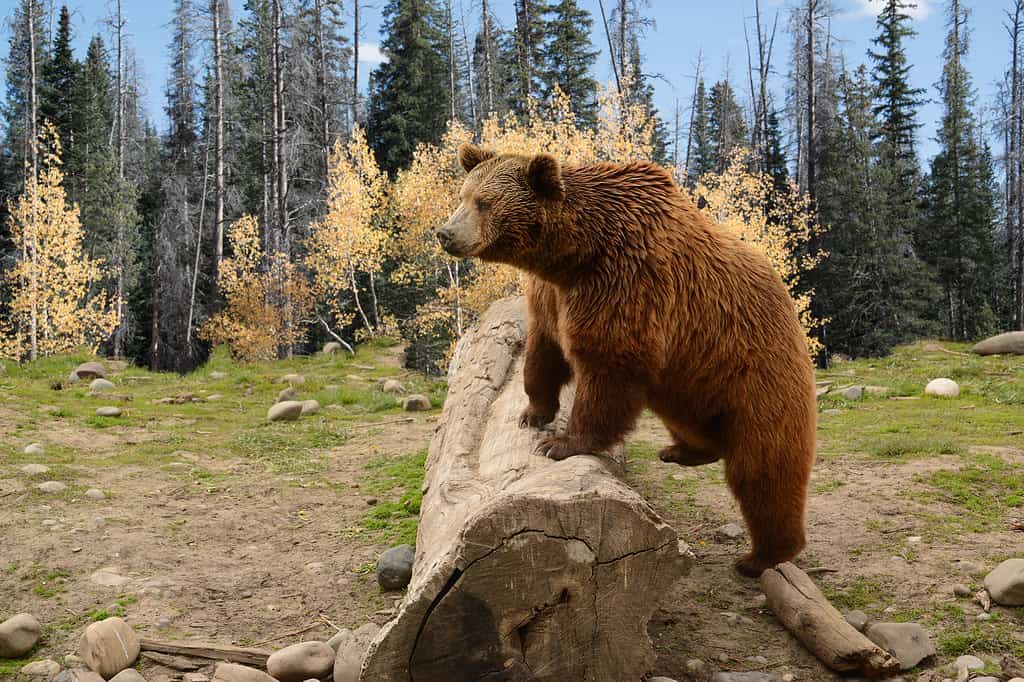
Discover how to avoid a grizzly bear confrontation in Yellowstone National Park.
©Georgia Evans/iStock / Getty Images Plus via Getty Images
Overview of Grizzly Bears in Yellowstone National Park
While both grizzly bears and black bears call Yellowstone National Park home, grizzly bears are far more terrifying and stronger than black bears. This makes them a potential threat to visitors of the park. Grizzly bears are a type of brown bear known for their hulking stature and grizzled, or silver-tipped, fur. Although grizzly bears once recorded high population numbers and a large distribution in the western United States, their numbers and range have shrunk significantly. They are isolated to specific protected locations, such as Yellowstone National Park.
Around 150 to 200 grizzly bears roam Yellowstone, and a little over 1,060 grizzlies live in the greater Yellowstone area. These bears often reside in Lamar Valley and Hayden Valley. They may also reside near Mount Washburn or roam the areas between the East Yellowstone Entrance and Fishing Bridge. Grizzly bears usually shy away from human activity, so visitors are more likely to encounter these creatures on hikes through the backcountry than in human-dominated areas within Yellowstone.
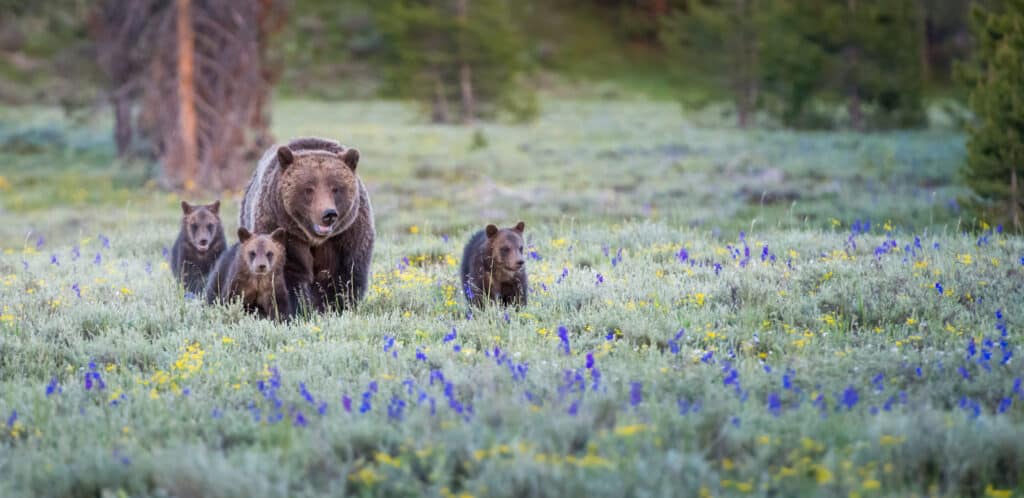
More than 1,000 grizzly bears live in the greater Yellowstone area.
©iStock.com/Jillian Cooper
Characteristics of Grizzly Bears
Grizzly bears may weigh between 200 and 700 pounds, and males weigh more than their female counterparts. Furthermore, grizzlies measure 1.5 to two times larger than black bears. The fur of a grizzly bear appears brown and grizzled, or silver-tipped, while a black bear displays a black coat coloration. Therefore, visitors can identify a grizzly by its coat coloration and size.
Additionally, the lifespan of the grizzly bear ranges between 15 and 30 years. The habitat of grizzly bears may include forests and meadows, and they often hunt for food near freshwater. While some may assume that grizzly bears are slow beasts hindered by their immense size, this assertion is false. Grizzlies are agile creatures, running up to 40 miles per hour, making them extremely dangerous to humans.
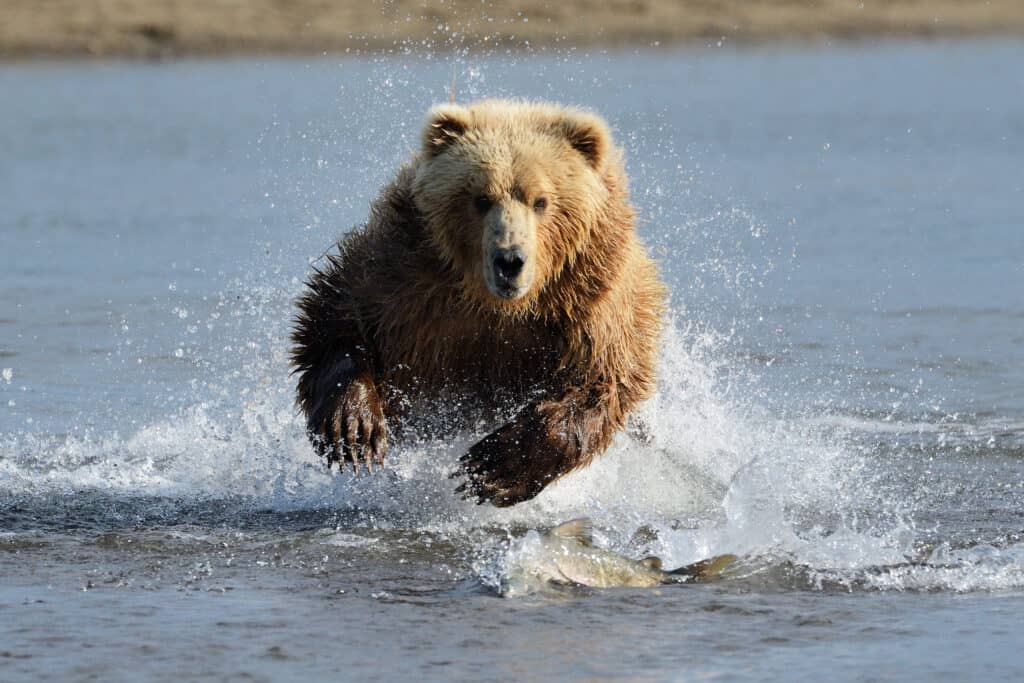
The grizzly bear can run up to 40 miles per hour.
©AndreAnita/Shutterstock.com
How to Avoid a Grizzly Bear Confrontation in Yellowstone
The first step in avoiding a grizzly bear confrontation in Yellowstone National Park is safety preparedness. There are several ways to accomplish preparedness while visiting Yellowstone. For one, visitors should lock away food, drinks, trash, toiletries, and any other products with a strong scent. Strong scents attract grizzly bears, and grizzlies may attack tourists who leave out food, soap, trash, dishes, etc.
Certain preventative boxes and canisters keep grizzlies from rummaging through belongings. Additionally, visitors may stow away food and scented items in their vehicles’ trunks. Tourists who choose to stay overnight within the park are likely to have access to bear-proof storage boxes near campsites and lodging. The best way to attract a grizzly is to leave scented items accessible while the best way to avoid a grizzly is to keep these items locked away.
Another way of accomplishing preparedness in Yellowstone is to remember the 100-yard rule. Park officials encourage tourists to keep at least 100 yards of distance between themselves and a grizzly bear they spot in the wild. This distance ensures the safety of the grizzly bear and the visitor. Furthermore, visitors who choose to hike in areas where grizzlies might be present should make plentiful noise while traversing the area. Noises like talking, singing, or shouting will cause grizzlies to flee from the area, as they fear encountering humans as much as we fear discovering them.
Finally, visitors to Yellowstone should always carry bear spray, especially when hiking or exploring areas with little human activity. Bear spray deters provoked or aggressive grizzlies from attacking visitors, and park officials encourage tourists to purchase bear spray before entering Yellowstone National Park.
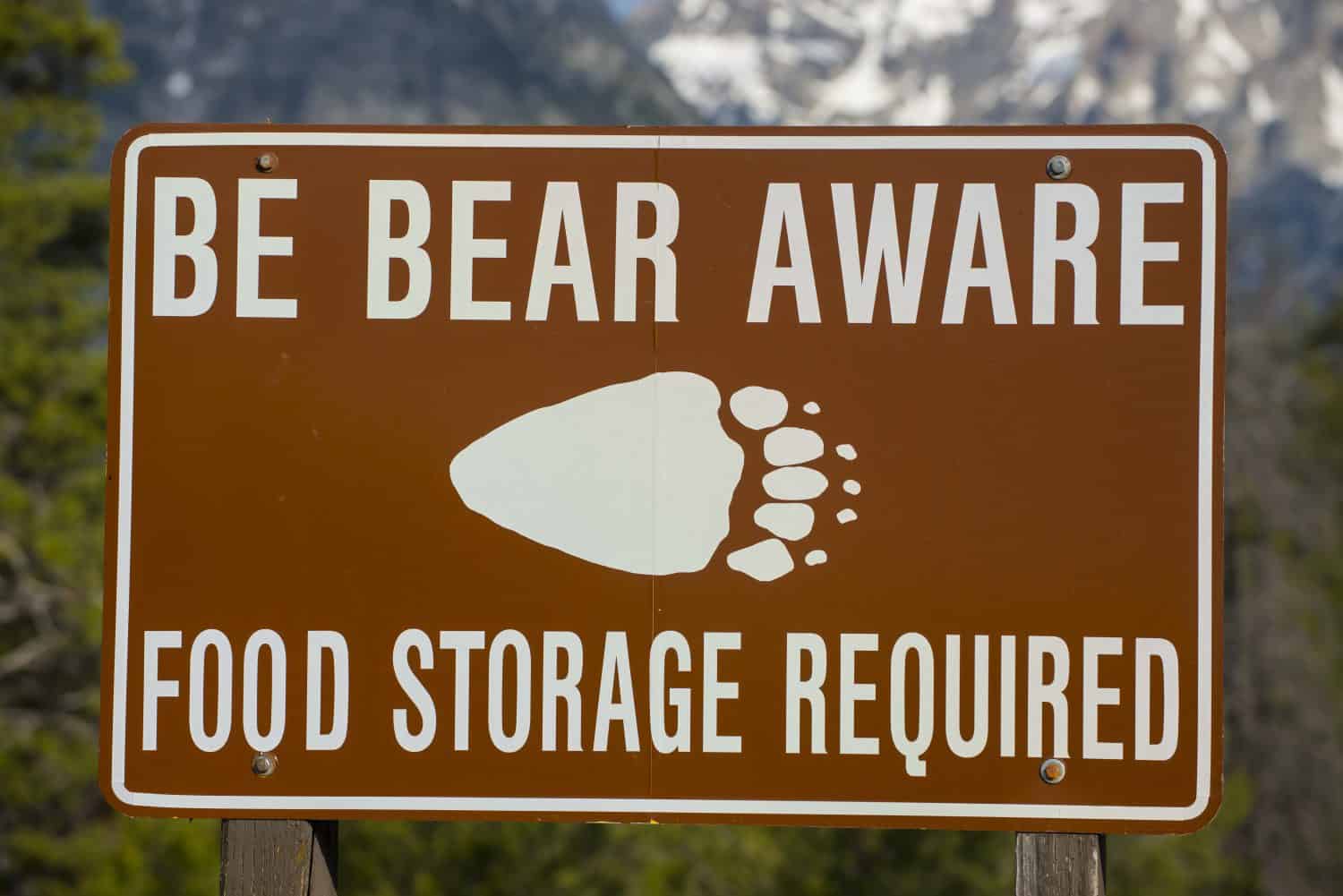
Proper food storage is crucial in avoiding a grizzly bear confrontation in Yellowstone.
©Kent Weakley/Shutterstock.com
What if a Visitor to Yellowstone Encounters a Grizzly Bear?
If a visitor accidentally comes too close to a grizzly bear, they should slowly back away while making noise. Visitors should also have their bear spray ready in case the grizzly decides to charge them. In many cases, a grizzly bear will exhibit certain behaviors that show a human that the human is too close. For example, the bear may make a huffing noise, hit the ground with its paws, chomp its teeth together, or stick out its lips. These signs should signal a human to back away cautiously from the bear.
What to Do if a Grizzly Bear Charges
If a grizzly bear begins to charge a visitor, the visitor should not move but stay put. Most grizzly bears will break away from their charge. A visitor should never run away from a grizzly bear, as the bear will be more likely to chase and attack a human that runs away. Additionally, grizzlies are significantly faster than humans, and the human will not outrun the bear.
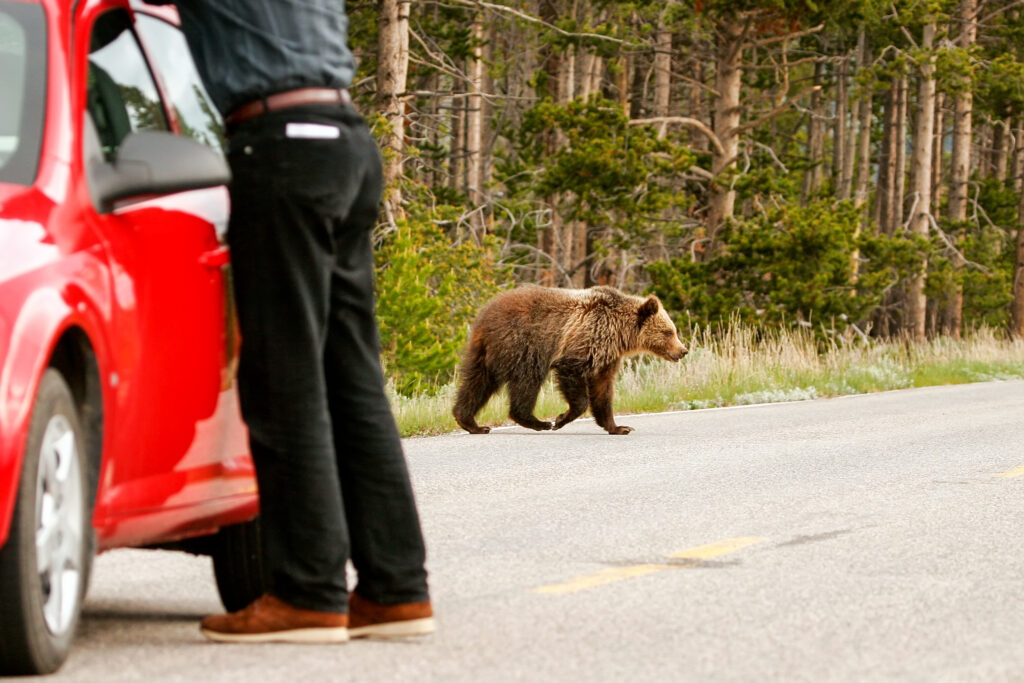
Humans who encounter grizzly bears should not run away, as the grizzly is likely to charge after them.
©Don Mammoser/Shutterstock.com
What to Do if a Grizzly Bear Makes Physical Contact
If a bear makes physical contact with a visitor, the person should immediately drop to the ground on their stomach. The visitor should place their hands clasped behind their hand while their elbows protect their face. In this position, the person should not move or make a sound unless the bear attacks predatorily.
What to Do if a Grizzly Bear Engages in a Predatory Attack
In the case of a predatory attack, a person should fight back with all their strength. However, grizzlies are likely to retreat before an attack. In this case, humans should stay in this position for several minutes after making contact with the grizzly to ensure that the bear has retreated. In Yellowstone National Park, visitors who were attacked by bears received fewer and less severe injuries when playing dead than when fighting back against the grizzlies.
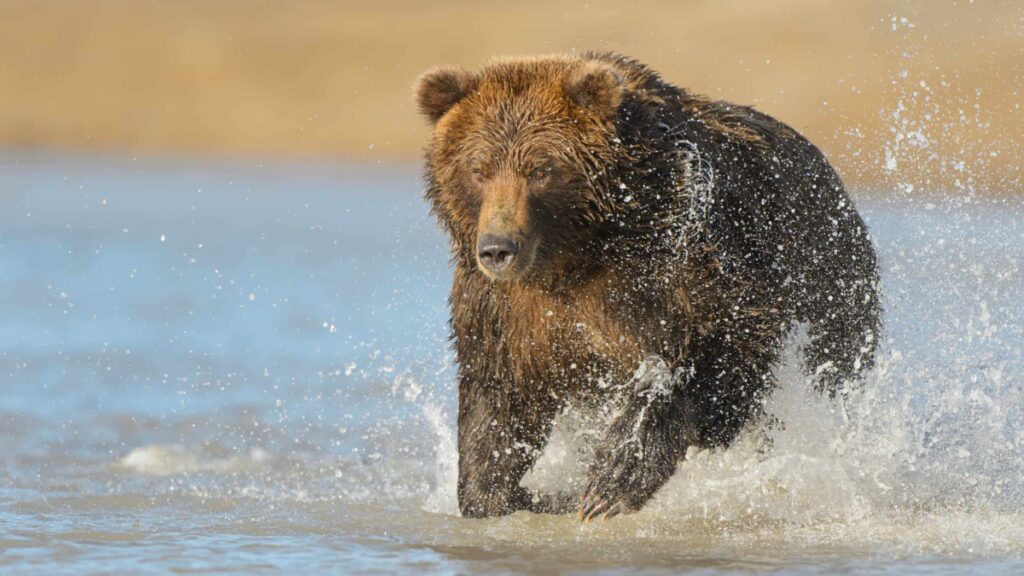
If a grizzly bear makes contact with a human, the human should play dead to avoid severe injury.
©NaturesMomentsuk/Shutterstock.com
Injuries and Fatalities Related to Grizzly Bear Attacks in Yellowstone
Grizzly bears have injured 44 people in Yellowstone National Park since 1979. The chances of receiving an injury from a grizzly in Yellowstone measure one in 2.7 million visits. Therefore, grizzly bear attacks are extremely rare within the park. Additionally, grizzly bears have killed only eight visitors to Yellowstone since 1872. Thus, the chances of experiencing a grizzly bear-related fatality in Yellowstone are also rare. In fact, more people have died from drowning, thermal activity, and bison attacks than from grizzly bear attacks in the park’s history.
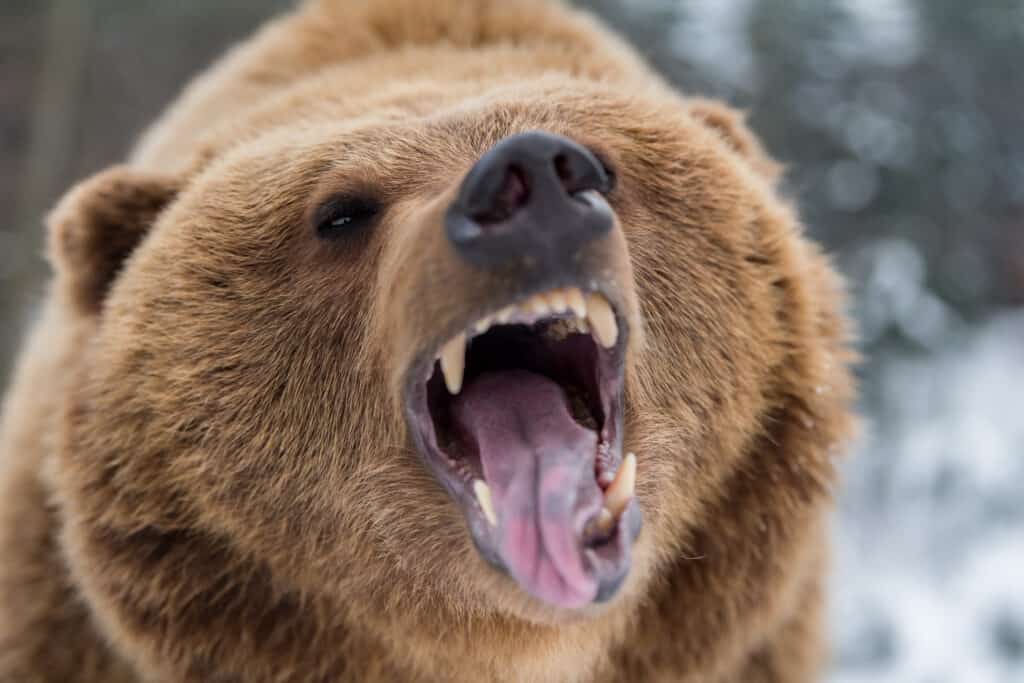
Grizzly bear fatalities are rare in Yellowstone but not impossible, so visitors should take caution.
©Volodymyr Burdiak/Shutterstock.com
Thank you for reading! Have some feedback for us? Contact the AZ Animals editorial team.

